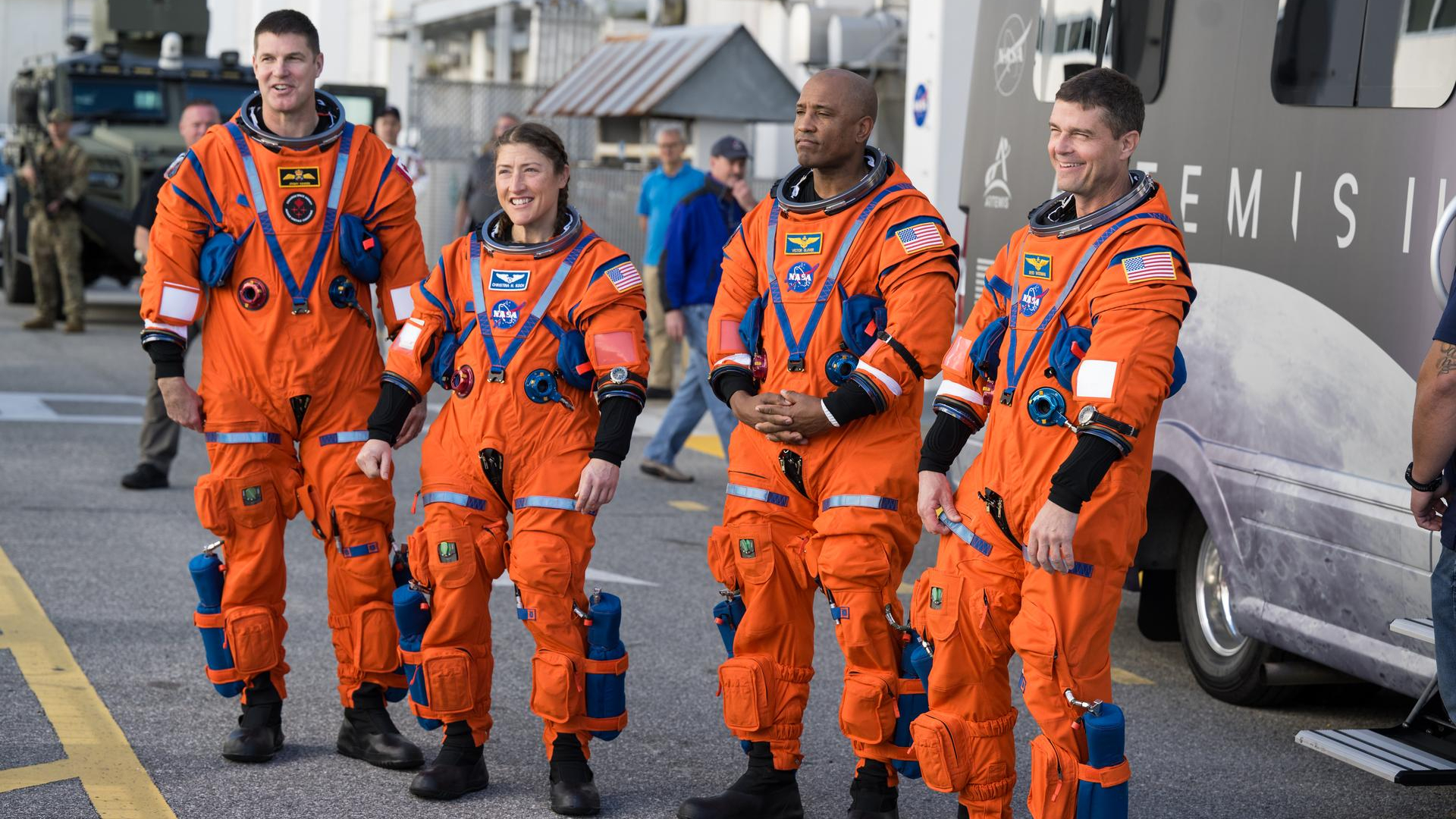Brazil’s First Astronaut, Fresh ISS Crew Reach Orbit

The first Brazilian ever to reach space and two International Space Station (ISS) astronauts launched skyward late Wednesday on a two-day trip to the orbital laboratory.
Brazilian astronaut Marcos Pontes and the 13thspace station crew rocketed into orbit after a flawless liftoff of their Russian-built Soyuz booster from its Baikonur Cosmodrome launch site in a Central Asian desert in Kazakhstan.
Pontes left Earth at 9:30 p.m. EST (0230 March 30 GMT) alongside ISS Expedition 13 commander Pavel Vinogradov and flight engineer Jeffrey Williams aboard a Russian Soyuz TMA-8 spacecraft. Their mission began at the same historic pad that saw cosmonaut Yuri Gagarin launch on the first-ever manned spaceflight on April 12, 1961.
"We're feeling good," said Vinogradov, a cosmonaut with Russia's Federal Space Agency, after the astronaut trio reached orbit. "We're smiling here."
A smiling Pontes - a lieutenant colonel in the Brazilian Air Force - pointed to the Brazilian flag patch emblazoned on his Sokol spacesuit and waved to cameras inside theSoyuz capsule during the nine-minute trip to space. He will spend eight days conducting experiments aboard the ISS.
The Expedition 13 crew, however, has a six-month space mission ahead of them to relieve Expedition12 commander Bill McArthur and flight engineer Valery Tokarev, who have served aboard the ISS since their orbital arrival in October 2005.
"It was a beautiful launch and a beautiful day for the space station," said Kirk Shireman, NASA's deputy ISS program manager, just after the successful spaceshot.
Breaking space news, the latest updates on rocket launches, skywatching events and more!
Before today's launch, Pontes and the Expedition 13 crew shrugged off a pair of omens -a rare solar eclipse and their mission's numerical moniker - which havetraditionally been hailed as unlucky.
"I think the eclipse and the number 13 are an alignment of the stars for a very good mission," Pontes said. "Everything we do is like a present to commemorate this special date."
The Expedition 12 astronauts aboard the ISS were able to photograph the eclipse's shadow on Earth during the event.
A busymission
Vinogradov and Williams have a busy six months ahead of them.
The two astronauts hope to host two NASA space shuttle crews during their mission, beginning with the anticipated July arrival of STS-121- NASA's second test flight following the 2003 Columbia accident -aboard Discovery. That flight is also expected to return the ISS to its full, three-person crew size by delivering European Space Agency (ESA) astronaut Thomas Reiter to the station.
"Probably the most special part of the flight will be Thomas joining us on board," Williams said before today's launch.
ISS crews have been limited to two astronauts a piece since the Columbia accident.
A second shuttle flight, STS-115 aboard the Atlantis orbiter, is scheduled to launch toward the ISS no earlier than late August to deliver a new set of solar arrays and resume space station construction.
Returning the ISS to a three-person crew and kick-starting its stalled construction plan is essential for the orbital laboratory, Vinogradov said.
"Prior to the Columbia [accident], the delay in the station assembly sequence was measured by months," the Expedition 13 commander has said. "Now it's measured by years and growing with each expedition."
A nation's first spaceflight
As the Expedition 13 crew prepares to take charge of the ISS, Pontes is shouldering the space exploration hopes of his entire nation.
"It's a very good feeling, I'm very happy about this, but it's a very big responsibility," Pontes said about his role as Brazil's first astronaut. "I will take it very seriously."
Pontes joined NASA's international astronaut ranks in 1998 hoping for space shuttle flight. But the delays caused first by the Columbia accident, then by NASA's recovery and ongoing fuel tank foam work prompted the Brazilian Space Agency to seek a seat aboard the Soyuz TMA-8 vehicle.
During his eight days aboard the ISS, Pontes plans to conduct a series of nanotechnology experiments, as well as several for Brazilian students across schools in his native country. He will return to Earth with the Expedition 12 crew on April 8.
His Centennial Mission also commemorates the 100-year anniversary of the first heavier-than-air flight by Brazilian aviator Alberto Santo-Dumont in 1906.Riding into space with the Brazilian astronaut were his nation's flag, a jersey of the country's national soccer team and other items.
"It's not only because of governments or the science that we do this," Pontes said before launch. "It's because we as human beings have always had that need to know what's beyond."
It will take Pontes and the Expedition 13 crew about two days to reach the ISS after a series of orbital maneuvers to place them in the proper rendezvous position.
The three astronauts are expected to dock at the space station's Zarya control module Friday at 11:19 p.m. EST (0419 April 1 GMT). NASA will provide live coverage of Expedition 13's ISS docking on NASA TV beginning at 10:00 p.m. EST (0300 April1 GMT).
- Brazil's First Astronaut, Next ISS Crew to Launch Today
- Brazil's First Astronaut to Carry Nation's Flag, Hopes Spaceward
- Complete Coverage: ISS Expedition 12
- Complete Coverage: ISS Expedition 13

Tariq is the award-winning Editor-in-Chief of Space.com and joined the team in 2001. He covers human spaceflight, as well as skywatching and entertainment. He became Space.com's Editor-in-Chief in 2019. Before joining Space.com, Tariq was a staff reporter for The Los Angeles Times covering education and city beats in La Habra, Fullerton and Huntington Beach. He's a recipient of the 2022 Harry Kolcum Award for excellence in space reporting and the 2025 Space Pioneer Award from the National Space Society. He is an Eagle Scout and Space Camp alum with journalism degrees from the USC and NYU. You can find Tariq at Space.com and as the co-host to the This Week In Space podcast on the TWiT network. To see his latest project, you can follow Tariq on Twitter @tariqjmalik.
